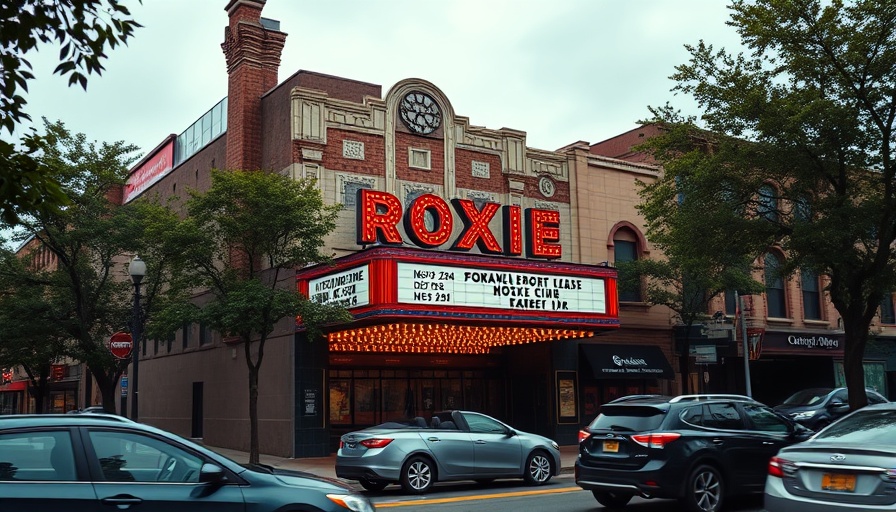
NEA Funding Cuts Hit San Francisco's Cultural Landscape
In a troubling development for the arts community in San Francisco, the National Endowment for the Arts (NEA) has announced the cancellation of grants impacting at least 28 local art nonprofits. This decision diverges from the NEA’s previous commitment to foster artistic diversity and support a wide range of cultural organizations. The financial repercussions from these cuts will be felt across the city, affecting dance, theater, film, and literary organizations, and posing significant challenges moving forward.
What Does Losing NEA Funding Mean?
The grants, which ranged from $15,000 to $100,000, were crucial for organizations like the Bay Area Video Coalition, Dance Mission Theater, and the Roxie Theater. The halting of this funding has left many scrambling for alternative financing solutions to sustain their ongoing programs. Many organizations are now faced with the difficult task of rethinking their budgets and project timelines without this vital resource. These cuts come on the heels of a controversial budget proposal from President Trump’s administration, which aims to eliminate the NEA entirely.
Cultural Initiatives Under Threat
Despite the NEA’s new grant-making priorities emphasizing themes such as support for historically Black colleges and universities and empowerment of tribal communities, many organizations in San Francisco found these criteria perplexing. The reduced funding strikes at the heart of several programs that are already aligned with these objective milestones. For instance, Voice of Witness, a nonprofit focused on oral history storytelling, saw the cancellation of a $50,000 grant intended to support projects focusing on environmental issues—initiatives that could indeed contribute to the stated governmental priorities.
Historical Context: The Arts and National Funding
Federal funding for the arts in the United States has always been a contentious issue. Established in 1965, the NEA has played a fundamental role in cultivating a vibrant arts landscape, providing essential support for projects that elevate community voices and engage diverse populations. Over the decades, however, political tides have changed, and the very existence of the NEA has been debated in Congress. Critics argue that the arts should be self-sustaining, while supporters believe in the importance of public investment to ensure accessibility and diversity.
Community Resistance: Voices from the Ground
Local leaders and artists are rising to challenge these cuts, arguing that public funding is vital for maintaining cultural heritage. Community supporters have been vocal about their disappointment, calling for greater accountability from elected officials. Initiatives have begun to mobilize resources and advocate for continued arts support in the face of these cuts. By rallying community members and local stakeholders, they hope to find creative solutions to mitigate the impact of diminished funding.
Future Predictions: What Lies Ahead for Arts Funding?
As federal arts funding remains uncertain, many nonprofits may need to adapt to a shifting cultural landscape. This unpredictability necessitates establishing stronger partnerships with local businesses and social enterprises to create sustainable funding sources. Future trends may point toward a rise in community-oriented funding models that prioritize grassroots support and public engagement. In addition, the encroachment of corporate sponsorships could redefine the boundaries of artistic funding, leading to challenging scenarios where creative expression is tethered to commercial interests.
Building Stronger Community Connections
It has become increasingly evident that the future of San Francisco's nonprofit arts organizations lies in their ability to connect deeply with local communities. By leveraging relationships with local stakeholders, nonprofits can enhance program viability and drive home the value of arts and culture. This means not just seeking financial support, but actively engaging the community in meaningful dialogue about the significance of their work and its impact on societal well-being.
The Path Forward: What Can You Do?
San Franciscans can play an essential role in ensuring the survival of their artistic community. Now is the time to show support for local nonprofits by attending events, participating in fundraising activities, and advocating for policies that favor arts funding. Becoming a patron of the arts could be as simple as purchasing tickets or becoming recurring donors to organizations that resonate with personal values. Community involvement will be crucial in weathering these challenging financial times and cultivating a robust arts culture.
Conclusion
The cessation of federal NEA funding for San Francisco arts organizations poses immediate challenges, but it also presents an opportunity for advocacy and community engagement. By standing up for local arts initiatives and exploring new avenues for funding, residents can help preserve the rich cultural fabric that defines San Francisco. Join the conversation, support the arts, and make your voice heard.
 Add Row
Add Row  Add
Add 




 Add Row
Add Row  Add
Add 

Write A Comment